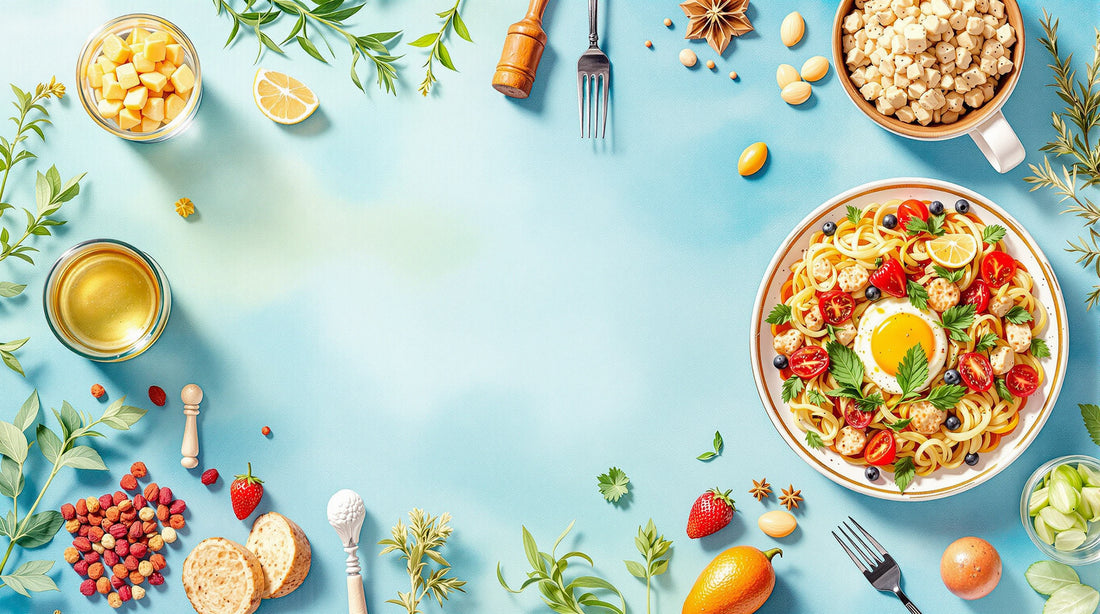Food trivia is a fun way to learn about culinary history, global traditions, and record-breaking dishes. Did you know that 4% of the world’s cheese production is stolen each year? Or that ketchup started as a fish-based sauce in ancient China? From popcorn dating back 5,600 years to the world’s largest burrito weighing over 12,000 pounds, food trivia offers a mix of surprising facts and cultural insights.
Here’s a quick look at what you’ll discover:
- Historical Facts: Popcorn necklaces, ancient hot dogs, and the evolution of ketchup.
- Cultural Insights: Birthday food traditions in Denmark and Mexico, and unique flavor preferences worldwide.
- Food Records: The largest pizza, fastest pizza maker, and more.
- Seasonal Favorites: The history of pumpkin pies and green bean casserole.
Whether you’re hosting trivia night or just love food facts, this guide offers bite-sized knowledge to share and enjoy.
Food Trivia Fun Facts You Didn't Know About Your Favorite ...
1. Historical Food Trivia
- Popcorn's Ancient Roots: Archaeologists discovered popcorn ears in New Mexico's Bat Cave that date back over 5,600 years. Native Americans even made popcorn necklaces, which were later purchased by Columbus and his crew. The Aztecs also incorporated popcorn into their religious ceremonies.
- Hot Dogs Through Time: The origins of hot dogs trace back to Babylonia around 1500 B.C.E., where cooks stuffed animal intestines with seasoned meat. The Romans later called it "salsus" and served it during their Lupercalia festival. Fast forward to the late 19th century, German immigrants brought frankfurter sausages to Coney Island, paving the way for the modern hot dog.
- The Story of Ketchup: Ketchup’s journey is far from ordinary. An ancient Roman recipe from around 300 B.C.E. combined vinegar, pepper, oil, and anchovies. By 1690, the Chinese created "ke-tsiap", a sauce made from pickled fish and spices. Tomato-based ketchup as we know it today wasn’t introduced until 1876 when Henry Heinz began mass-producing bottled versions.
2. Cultural Food Insights
History tells us where food comes from, but culture adds the flavor that makes it unforgettable.
-
Unique Birthday Food Traditions
In Denmark, singles turning 25 get sprinkled with cinnamon by their friends, and those reaching 30 are "peppered" instead. In Mexico, the birthday tradition known as "Mordida" involves playfully pushing the celebrant's face into their cake while everyone cheers. These quirky rituals highlight how food becomes a central part of celebrations around the world. -
Cultural Flavor Preferences
Taste preferences vary widely across cultures. In the UAE, people find spicy dipping sauces with gochujang much hotter compared to Korean consumers. Similarly, Italians and Czechs evaluate goat milk yogurt based on its odor, flavor, sourness, and sweetness, demonstrating how cultural backgrounds influence taste perceptions. -
Traditional European Signature Dishes
European cuisine reflects its deep cultural roots. Norway’s Fårikål, a comforting mutton stew, is a fall favorite. Meanwhile, Ukraine's Borscht, a vibrant beetroot soup, holds a special place in family meals.
These examples show how food traditions and preferences shape our culinary experiences in unique ways.
sbb-itb-46dff1a
3. Food Records and Inventions
Food records and inventions showcase incredible culinary achievements, pushing the boundaries of what’s possible in the kitchen. These examples highlight the sheer scale and ingenuity behind some of the most impressive feats:
-
World's Largest Burrito
In 2010, a team of 150 cooks in Mexicali, Mexico, created a burrito weighing a staggering 12,785 lbs and stretching 8,458 ft long. Made with flour tortillas, rice, beans, meat, onions, and cilantro, the burrito was so massive that a crane was required to move it. -
Largest Pizza
On December 13, 2012, Fiera Roma in Rome, Italy, crafted a gluten-free pizza covering 13,580.28 square feet. This enormous creation demonstrated how traditional pizza-making techniques can be scaled to an unbelievable size. -
Fastest Pizza Maker
Brian Edler set a speed record in Findlay, Ohio, by making 206 pizzas in just one hour on December 9, 2010, at a Domino's restaurant. Each 12-inch pizza included a 14-ounce base, 4–6 ounces of sauce, and 8–10 ounces of cheese. This achievement showcases the precision and speed required in professional pizza-making.
4. Holiday and Seasonal Foods
American holiday foods tell a story of shifting traditions and cultural moments. Let’s look at a few highlights that shaped these beloved customs.
In 1705, Colchester, Connecticut delayed Thanksgiving due to a pumpkin shortage. Fast forward to today, and pumpkin pie reigns supreme during Thanksgiving, with Americans enjoying around 50 million pies each year.
Some holiday classics are more recent inventions. In 1955, Dorcas Reilly from Campbell Soup Company created the green bean casserole, which quickly became a Thanksgiving favorite. By 2015, Minnesota was producing 41 million turkeys annually, reflecting the large-scale nature of modern Thanksgiving celebrations.
These examples show how Thanksgiving has grown from intimate family gatherings into a major cultural and economic event.
Conclusion
Food trivia is a fun way to dive into culinary traditions while sharing memorable moments with friends and family. It combines interesting facts and questions that give participants a chance to learn about food customs from around the world, turning any gathering into an interactive experience.
But food trivia isn’t just about having fun. It mixes learning with entertainment, making it an engaging way to explore global cuisines and cooking techniques. This blend of education and enjoyment sparks curiosity and encourages people to look deeper into the world of food.
Whether you're hosting a trivia night, brushing up on culinary knowledge, or adding some excitement to family dinners, food trivia can bring something extra to the table. Take it a step further by pairing trivia with hands-on activities - like cooking demos inspired by the questions or exploring local dishes tied to the trivia. These small touches can turn trivia into a gateway for real-life culinary adventures and a deeper appreciation for food.
